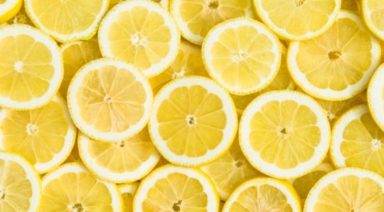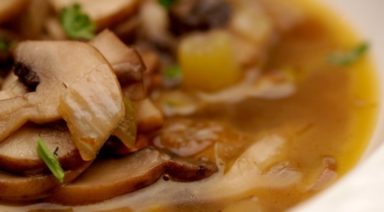The Truth and Question Surrounding The American Parasite

It’s an alarming idea. If you’re tired, can’t sleep well, have belly fat, and crave unhealthy foods, it may not be your fault. It may be due to a terrifyingly strong yeast—candida—growing away in your belly, thanks to our horrible American diets. However, by switching one tiny diet additive, you can lose weight, prevent life-threatening disease, and basically get your life in order. This is the idea proposed by a recent YouTube video, The American Parasite, that has the internet abuzz about candida, probiotics, and whether or not this video is 100% true. Let’s set a few things straight, shall we?
Candida is a type of fungus that lives in your gut. There are, in fact, tons of living things in your gut, and many of them are healthy and part of your system. However, if the balance comes undone (20% “bad” bacteria and 80% “good”), it means all kinds of health consequences. Candida, in particular, is a serious issue; because it’s a yeast, it feeds on refined sugar, artificial sweeteners, and preservatives. According to The American Parasite, this is why you crave all those doughnuts, candy bars, and French fries. Then the candida, happy and fat, multiplies until it overwhelms the good bacteria inside of you. The solution is simple, however, is the video’s conclusion. Just take these pills that we make once a day and you’ll be fine! There is certainly a lot of fact and truth in The American Parasite, but once the viewer discovers they are trying to sell a cure that will fix this horrifying health issue, do they lose all credibility?
The debate on the Internet rages on. Some viewers declare that candida is absolutely the latest health epidemic sweeping America, and that we need to fix our situation yesterday. Others discredit the video itself, stating that it’s just one big advertisement to be laughed off. In the end, The American Parasite really does has to be taken with a grain of salt. It certainly asks more questions than it answers. Is refined sugar, artificial sweetener, and fat to blame for all the health issues? Is it out of our hands? Is there just a miracle cure that you can pop once a day to eat whatever you want?
The fact of the matter is, candida is real. There are a lot of additives in our food that really don’t belong there, and it is entirely plausible you could have a gut imbalance. Taking probiotics isn’t necessarily a bad idea. Just be sure you do your research and understand your body’s individual needs, rather than buying because a YouTube video told you to. We’ve taken a few steps for you:
How it can grow
Candida overgrowth can arise because of a number of factors:
- Lots of refined sugars and carbs in your diet (candida does, in fact, enjoy these foods and causes it to grow)
- Consuming a lot of alcohol (another candida-feeding food, because of the tons of sugars in alcohol)
- Taking oral contraceptives
- Eating a diet high in beneficial fermented foods like Kombucha, sauerkraut and pickles (sure, it helps good bacteria. It helps candida grow, too!)
- Living a high-stress lifestyle
- Chronic antibiotic use (sure, it kills things in your gut. Too bad it’s most likely the good bacteria.)
- Chronic oral steroid use
How you can tell:
There are a lot of symptoms that may make you aware of a candida imbalance:
- Energy: chronic fatigue, loss of energy, general malaise, decreased libido
- Skin: Eczema or psoriasis, excessive redness
- Infections: toenail fungus, thrush, yeast infections, frequent bladder infections
- Digestive: irritable bowl syndrome bloating, gas, intestinal cramps, rectal itching, altered bowel functions (constipation or diarrhea), irritable bladder
- Hormonal : menstrual irregularities, PMS, thyroid dysfunction.
How to fix it:
Balance it out. As we said, your gut is home to good bacteria, so you need to get to that 80-20 mixture. There are two ways that you can clean out the candida:
- Change your diet: this means saying goodbye to all processed foods, artificial sweeteners, refined sugars, and breads. It means eating only one cup of complex carbs (beans, rice, potatoes, etc.) a day. Cutting out fermented foods will help curb the candida growth as well. This route takes around 4-6 months.
- Add some supplements: you can offset your candida overgrowth by taking probiotics (25 to 100 billion units) that will help the good bacteria, while at the same time taking anti-fungal pills to take down the candida.
Can Earthing Repair Free Radical Damage, Improve Sleep, Increase Energy?

In all likelihood, you’ve tried Earthing (also known as grounding) whether you knew it or not. You know, you were strolling down the beach or sitting in your backyard, and you decided it was time for the shoes to come off. Sinking your toes into that warm grass or sand feels so good, doesn’t it? Turns out there’s a reason for that, and it’s more than just a moment of peace. It’s also a booster for your health!
You have the basic idea of Earthing, but getting into the specifics, it’s defined as the practice of obtaining the healing properties of the Earth through the simple act of touching it. You might be a little skeptical, but the good news is, there are medical practitioners who back it up, such Laura Koniver, M.D., of Summerville, S.C.
To understand the health benefits, Dr. Koniver says, we must also understand free radicals. You’ve probably heard of them as something to protect our bodies against, and you’re on the money. Free radicals are highly reactive atoms, molecules or ions that have unpaired electrons. Free radicals are “intimately connected to inflammation,” and inflammation is linked to cancer, heart disease, immune dysfunction, aging and cognitive decline. Dr. Koniver explains, “Using your body in any way, shape or form can create inflammation, so even during something healthy like yoga, where we’re stretching and creating microscopic tears to the muscles, we’re still building up free radicals.”
It’s pretty unavoidable, but it’s also just what happens living on our earth. It’s natural and normal, but it’s also something to actively combating, as free radicals do damage to our bodies. The most common and talked-about method is through antioxidants that neutralize the damage. However, Koniver maintains that Earthing is the best practice, and that consuming antioxidants is “definitely a drop in the bucket compared to what Earthing can do.”
The science behind Earthing is simple. According to Dr. Koniver, the free radicals that we build up throughout the day are positively charged, and the surface of the Earth is negatively charged.
“It’s a symbiotic thing,” adds Dr. Koniver. She argues that if we can get our vitamin D from the sun and our oxygen from the trees, we too can get healing electrons from the ground. In Dr. Koniver’s words, “We are meant to build up free radicals and inflammation by the way we live our lives, and the Earth is our docking base.”
A list of Earthing Health Benefits:
- Reducing inflammation by defusing excess positive electrons
- Reducing chronic pain
- Improving sleep
- Increasing energy
- Lowering stress and promoting calmness by reducing stress hormones
- Normalizing biological rhythms including circadian rhythm
- Improving blood pressure and blood flow
- Relieving muscle tension and headache
- Lessens menstrual and female hormone symptoms
- Speeds healing- used in some places to prevent bedsores
- Can eliminate jet lag
- Protecting the body from EMFs
- Shortens recovery time from injury or athletic activity
- Reducing or eliminating snoring
- Helping support adrenal health
- Weight loss
Getting started on Earthing is an extremely easy thing, as well. It’s free. It can be practiced almost anywhere. The instructions are simple. You just have to take off your shoes, to make sure you have exposure to the ground itself. You can wear socks if you want, as well. Koniver assures that you will still get the electron transfer necessary for the benefits.
This transfer, according to Koniver, can also be made through any point of the body, as long as that body part is making direct contact with the ground. So you can always take a nap in a sunny field, writing it off as a health benefit! How awesome is that?
Again, Earthing can be practiced almost anywhere, but Dr. Koniver points out that some places are better than others. “To me, if healthy grass is growing outside over a layer of soil, it’s connected to the crust of the Earth, and that’s all it needs to be,” says Koniver. Beaches are on the top of the list, as the moisture from the ground acts as a conductor, but grass, sand, rock, dirt, soil, all give health benefits as well.
Even concrete that’s been laid over the crust of the Earth can do the trick, though it’s not optimal. “Concrete acts as a semi-conductor,” says Koniver, “so if you live in a city with no real access to nature, you can map out a little patch and kick off your shoes.”
More good news about Earthing is that there is absolutely no such thing as overindulgence. Your body can benefit from just a few minutes, though 10 a day is the sweet spot as the minimum, according to Konniver. She truly believes you should work as much barefoot walking into your day as possible, whether it’s walking barefoot to get the mail or taking a quick stroll around your block.
In conclusion, it’s important to note that there are no current studies that definitively prove that Earthing has a major impact on human life. Some critics call it a placebo effect and nothing more. However, getting out in nature, grabbing a little sun, and moving your body a bit more during your day cannot be a bad thing for you. So there is nothing to fear if you want to give the practice a try. After all, all you have to do is kick off your shoes and sink your toes into earthy goodness. Ahhhh!





































